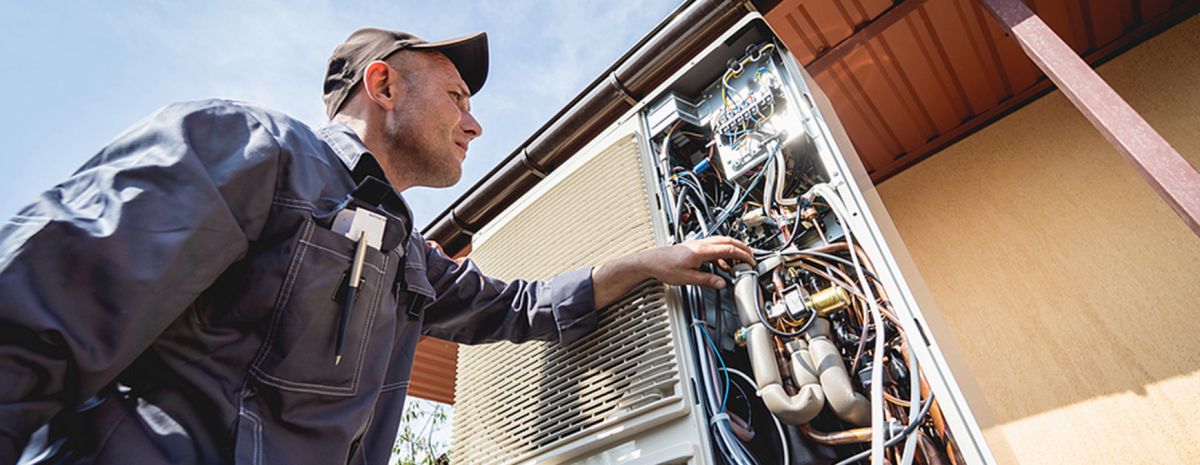RSI is a Great Training Option for Everyone
Learn more about how we can prepare you to advance your career.
Ready to become an HVAC technician? The first step in becoming an HVAC technician is to learn about the major components of an HVAC system. Then, after learning about these components, you will be ready for an HVAC program at The Refrigeration School.
What are the Major Components of an HVAC System?
Every HVAC system is a little different, but there are major components that each HVAC system shares. Some of these major components include:
Air Conditioner
The air conditioner cools a structure with a cold indoor evaporator coil, while the condenser releases hot air outside. A compressor moves refrigerant between the evaporator and condenser. The refrigerant evaporates in the indoor evaporator coil, pulling heat out of the structure and cooling the inside air.
Air Handler
Get Started on the Path to a New Career
Fill out our form to learn how we can help you change your life.
Designed to heat or cool air which is then transferred through the ventilation to make the temperature indoors more comfortable.
Blower Motor
After the temperature reaches a set level, an electric blower motor powers a fan pushing the warm air through the ventilation system.
Combustion Chamber
The location in the furnace that uses oxygen to provide proper combustion to heat up the air.
Condenser Coil
A component of the HVAC system that is located outside the structure where refrigerant releases the heat it absorbed from inside. The condenser coil rejects the energy from the evaporator coil to an outside source.
Evaporator Coil
Found inside the HVAC system’s indoor air handler, it uses refrigerant to absorb heat and lower the temperature from indoors.
A part of the furnace that absorbs heat and warms cool air when the heat of combustion rises.
An energy-efficient alternative to furnaces and air conditioners. Heat pumps use electricity to transfer heat from a cool location to warm the air in another location, making the warm area cooler and the cold area warmer.
Where the refrigerant is compressed to raise the temperature, then is passed on to the condenser to cool the air. The different types of compressors are reciprocating, rotary, scroll, screw and centrifugal.
Refrigerant
A chemical that transfers from liquid to vapor to absorb or release heat. To safely handle refrigerant, HVAC technicians must get Section 608 Certified by the EPA.
Thermostat
A temperature sensor that decides when to turn on and off the heater or air conditioning. A smart thermostat is a Wi-Fi enabled device that can automatically heat or cool an indoor space.
Ventilation
Ductwork that distributes air throughout a residence or building. Ventilation includes filters that need to be cleaned and replaced to improve air quality.
Want To Learn More?
Ready to start your new career at one of the best schools for HVAC in Phoenix? Because HVAC is a hands-on job, technical training is typically required for anyone to enter this field. Many people decide to invest in a trade program to learn the trade skills they need to be safe and effective as a professional. To learn more about our HVAC program offered at the Phoenix, AZ campus contact us at The Refrigeration School, or call 1-888-671-5803.
Additional Sources
This blog has been labeled as archived as it may no longer contain the most up-to-date data. For a list of all current blog posts, please visit our blog homepage at https://www.rsi.edu/blog/




